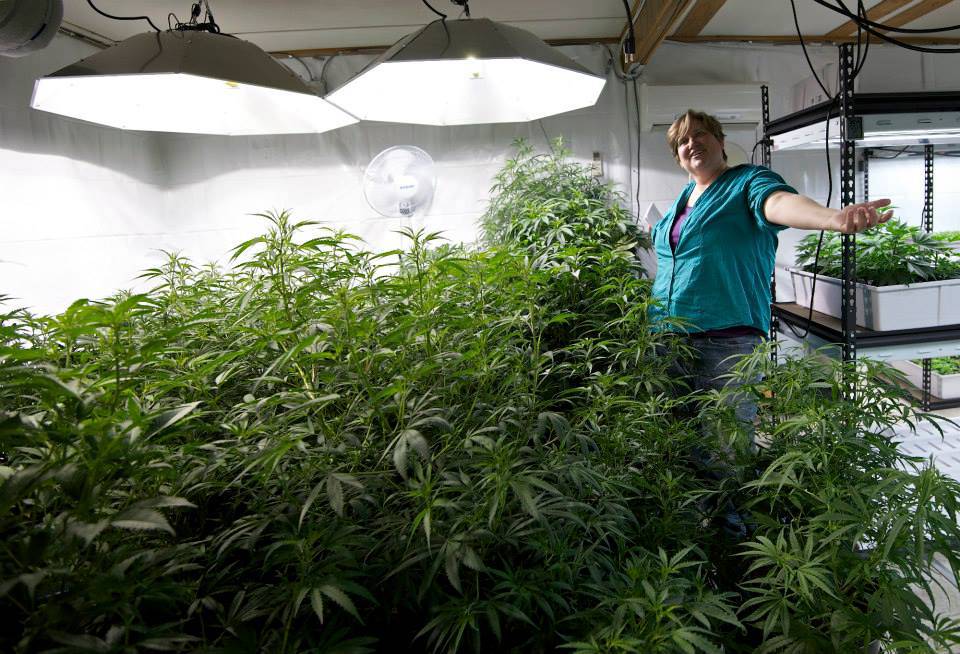Some thoughts on the recent JAMA cannabis report

Tuesday was a pretty big day for medical marijuana news.
If you missed it, the Journal of the American Medical Association analyzed 79 studies into the medical potential of marijuana. From that, the reviewers concluded that marijuana has proven to have little beneficial effect in treating a number of illnesses. Altogether, the results were mixed, and they published several articles on the project.
As with everything you read, this study should be taken with a healthy dose of skepticism. My former colleague Sue Vorenberg expands on some of the problems in the articles in a guest post below, and she makes some excellent points.
Wherever you stand on the issue, the most important takeaway from all this is that more research needs to go into the possible medical benefits of marijuana.
– Justin Runquist
So the Journal of the American Medical Association came out with several articles about cannabis in its June 23 Clinical Review and Education section.
The objective of the main article was to investigate which medical claims about marijuana have substantial evidence to support them and which do not.
Its conclusion? “There was moderate-quality evidence to support the use of cannabinoids for the treatment of chronic pain and spasticity. There was low-quality evidence suggesting that cannabinoids were associated with improvements in nausea and vomiting due to chemotherapy, weight gain in HIV infection, sleep disorders, and Tourette syndrome. Cannabinoids were associated with an increased risk of short-term AEs (adverse events).”
There’s no doubt that we need more research on all of these things, but the way this investigation was done concerns me.
The main chunk of data for this report was a literature review of 28 random clinical trials (randomly selected from a larger pool of clinical trials, I assume), with the objective: “To conduct a systematic review of the benefits and adverse events (AEs) of cannabinoids.”
Unbiased clinical studies are very important and could give us quite a bit of good information about the real medical benefits or harms of marijuana.
But I’m concerned with the source of JAMA’s information.
One of the problems with literature surveys (and I’m not sure which studies were reviewed by JAMA because you have to buy the article to look at them) is that a lot of past “official” studies on marijuana were done by the National Institute on Drug Abuse – an agency that has been repeatedly criticized for only supporting studies aimed at showing negative aspects of cannabis.
And NIDA has had a virtual monopoly on U.S. scientific studies of cannabis for decades. Only within the last month have the feds really started to push for a broader scope of study, with the Obama administration removing one of the major road blocks for conducting independent scientific research.
So here’s where the new JAMA literature study got its information:
“Evidence Review: The medical literature on medical marijuana was reviewed from 1948 to March 2015 via MEDLINE with an emphasis on 28 randomized clinical trials of cannabinoids as pharmacotherapy for indications other than those for which there are 2 US Food and Drug Administration–approved cannabinoids (dronabinol and nabilone), which include nausea and vomiting associated with chemotherapy and appetite stimulation in wasting illnesses.”
To me, that certainly looks like the group used NIDA research to make its claims. Also, if you look at JAMA’s Medical Marijuana overview page, the source for the information is NIDA.
Does that mean the information JAMA gathered is wrong? I can’t really say that. But I will say it’s suspect.
What we need are new unbiased cannabis studies – and lots of them – so we can build a base of research that we can trust.
Hopefully that will happen soon.
JAMA’s editorial in the package, Medical Marijuana: Is the Cart Before the Horse?, has some truth to it, but I also think the group’s research survey is doing the same thing in jumping the gun – because the research surveyed is likely biased.
Patients need reliable information about cannabis. And the scientific community need to know which ailments it treats and which it doesn’t.
New U.S. studies investigating that will take time (although there is also a fairly significant body of international research out there).
But chronically ill patients don’t have time to wait.
I’m not saying doctors should prescribe the drug without a significant body of evidence to support its use. But if a chronically ill patient decides to use cannabis, and they say it helps them, they shouldn’t be stigmatized for that – and they shouldn’t be denied other medical care just because they use cannabis as part of their treatment (yes, this happens).
Here’s a list of the other stories in the JAMA package:
Cannabinoids for Medical Use: A Systematic Review and Meta-analysis
Cannabinoid Dose and Label Accuracy in Edible Medical Cannabis Products
The package did find some positive evidence for cannabis use for pain and spasticity (which, if the research came through NIDA, is pretty impressive):
Findings: “Use of marijuana for chronic pain, neuropathic pain, and spasticity due to multiple sclerosis is supported by high-quality evidence. Six trials that included 325 patients examined chronic pain, 6 trials that included 396 patients investigated neuropathic pain, and 12 trials that included 1,600 patients focused on multiple sclerosis. Several of these trials had positive results, suggesting that marijuana or cannabinoids may be efficacious for these indications.”
Conclusions and Relevance: “Medical marijuana is used to treat a host of indications, a few of which have evidence to support treatment with marijuana and many that do not. Physicians should educate patients about medical marijuana to ensure that it is used appropriately and that patients will benefit from its use.”
As with any research survey – or for that matter anything you read on the Internet (including this post) – it’s always a good idea to dig deeper and see where the information comes from.
Cheers,
-SueVo


